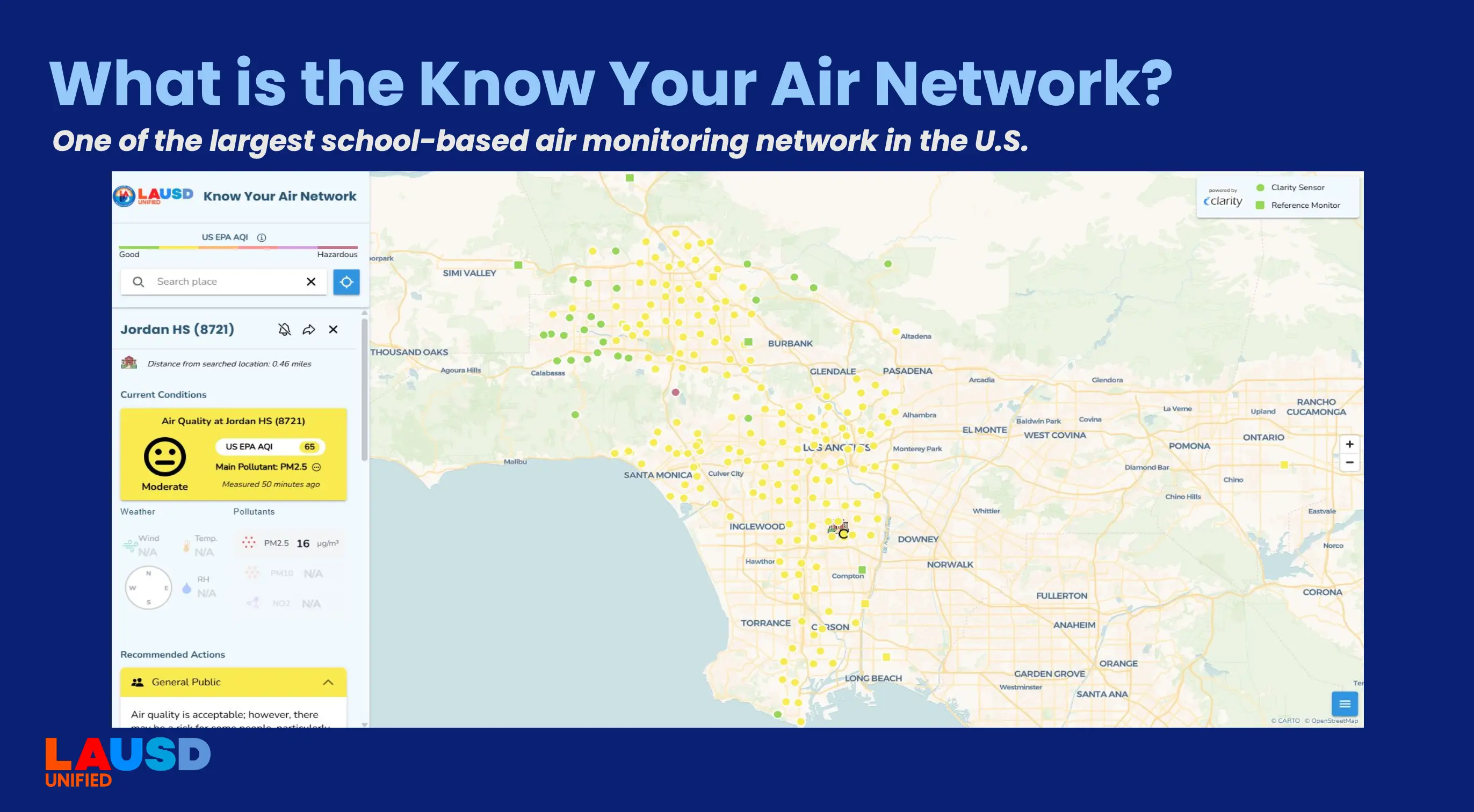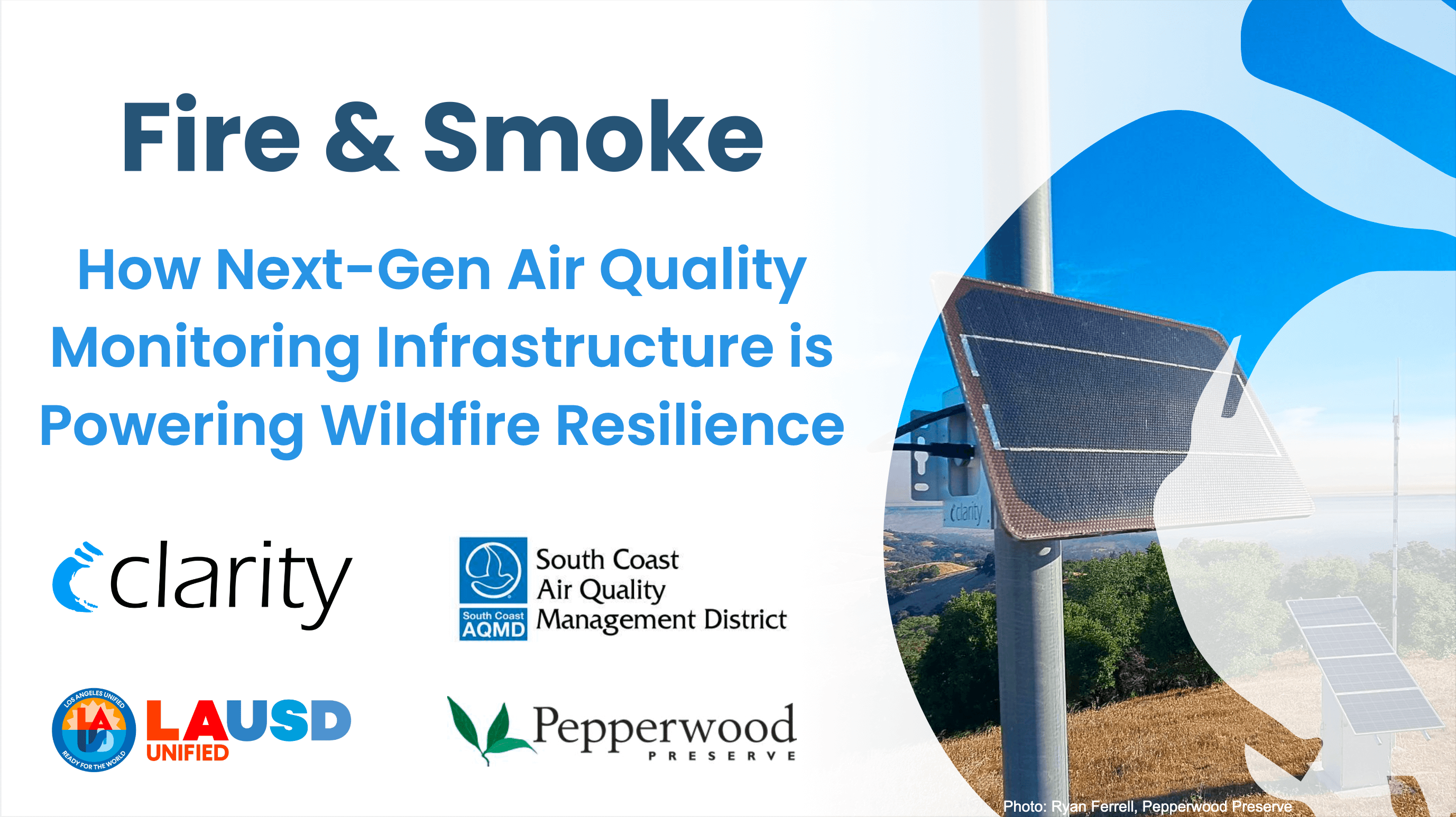Watch the full webinar here.
TL;DR: Organizations across California, including LAUSD, South Coast AQMD, and Pepperwood Preserve, are deploying real-time air quality sensors to improve wildfire response and community resilience. Speakers shared lessons from integrating sensor networks into public health tools, mapping systems, and educational programs, with a focus on accessibility, accuracy, and local impact.
Sean Wihera, Clarity Movement Co.
Sean kicked off the discussion by highlighting how various organizations are contributing to wildfire resilience through advances in air quality monitoring. He introduced key partnerships and initiatives, including Clarity's integration with the EPA and the US Forest Service’s Fire and Smoke Map, deployments across the Los Angeles Unified School District (LAUSD), and efforts in rural and wildland settings like Pepperwood Preserve. Sean emphasized the growing role of sensor technology in supplementing traditional regulatory air quality monitoring, setting the stage for a series of case studies from across California.
Levi Stanton, Clarity Movement Co.
Levi walked through Clarity’s path to becoming the second commercial air pollution sensor company included on the Fire and Smoke Map. The pilot, run in partnership with the EPA and Forest Service, set technical benchmarks for sensor performance and transparency.

Levi explained the rigorous testing process, including the development of the Global V2.1 calibration model. This model improved data accuracy across different climates and pollution levels, enabling Clarity’s sensors to closely match regulatory standards even during wildfire events.

The work culminated in hundreds of sensors now live across the US, with a focus on underserved areas often missed by other networks.
Carlos Torres, Los Angeles Unified School District
Carlos shared how LAUSD has built one of the largest school-based air quality sensor networks in the country. Originally deployed to improve situational awareness during smoke events, the network now covers hundreds of schools, offering hyperlocal data to inform school operations and community safety.

After the devastating January 2025 wildfires, LAUSD accelerated its efforts by adding PM10 with the Clarity Dust Module and NO2 capabilities with new Node-S air quality sensors, along with meteorological sensors.

The expanded “Know Your Air Network” is now used both for emergency response and as a STEM education tool, helping students engage with real-time environmental data.
Scott Epstein, South Coast AQMD
Scott presented the South Coast AQMD's gridded AQI map, which integrates both regulatory monitors and air quality sensor networks, including data from Clarity and PurpleAir. This blended approach improves resolution and accuracy, particularly in areas that lack dense air quality monitoring coverage.

Scott explained the challenges of incorporating consumer-grade sensors and stressed the importance of maintaining data quality and transparency. The agency continues to enhance the system and is exploring ways to incorporate more sensor types through standardized data formats.
Ryan Ferrell, Pepperwood Preserve
Ryan offered a perspective on the importance of air quality measurement in Northern California’s wildland-urban interface. Using an EPA grant, his team deployed Clarity sensors across remote and agricultural areas where air quality data was previously unavailable.

The goal was to empower local residents, workers, and emergency managers with real-time air quality insights. Ryan described how the sensors complemented existing early-warning systems like wildfire cameras and radio networks, acting as a kind of environmental “sense of smell.” He emphasized the importance of community partnerships in building trust and making the network locally relevant.

Looking Forward
Air quality monitoring is becoming more local, responsive, and collaborative. From school districts to nature preserves, communities are stepping up with tools and partnerships that meet the moment. As wildfire risks continue to evolve, so too must our strategies for staying informed and protected. Partner with Clarity to build your own air quality sensor network.
